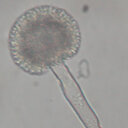Self-assembling covalent organic framework functionalized poly (styrene-divinyl benzene-glycidylmethacrylate) composite for the rapid extraction of non-steroidal anti-inflammatory drugs in wastewater.
Parole chiave
Astratto
The growing use of non-steroidal anti-inflammatory drugs (NSAIDs) has seriously affected human health and ecosystems, as a result, the World Health Organization (WHO) has regarded them as emerging contaminants. NSAID's polar nature and trace amount present in wastewater make their extraction and determination challenging in modern analytical science. Therefore, regarding the need, we herein report a rapid, sensitive and selective in-syringe solid-phase extraction (SPE) method coupled with ultrahigh performance liquid chromatography and UV detector for the determination of seven NSAIDs in environmental water samples. Specifically, the NSAIDs in water samples were directly extracted by using synthesized porous covalent organic framework functionalized poly (styrene-divinyl benzene-glycidylmethacrylate) composite (COF@PS-GMA) without further cleanup procedures. The adsorption of NSAIDs on COF@PS-GMA sorbent was investigated by using adsorption isotherms and kinetic studies. Various parameters, including amount of sorbent, pH of the samples, the volume of desorption solvent, and desorption time that were involved in in-syringe SPE were optimized. Under the optimized conditions, good linearity was observed at 0.005-5.0 μg mL-1 with method quantification limits (LOQs) estimated between 0.54-2.74 μg L-1. The recoveries of the seven NSAIDs at the level of 0.5, 5.0 and 20.0 μg L-1 were ranging from 84.3% to 99.6%.




